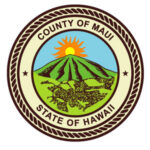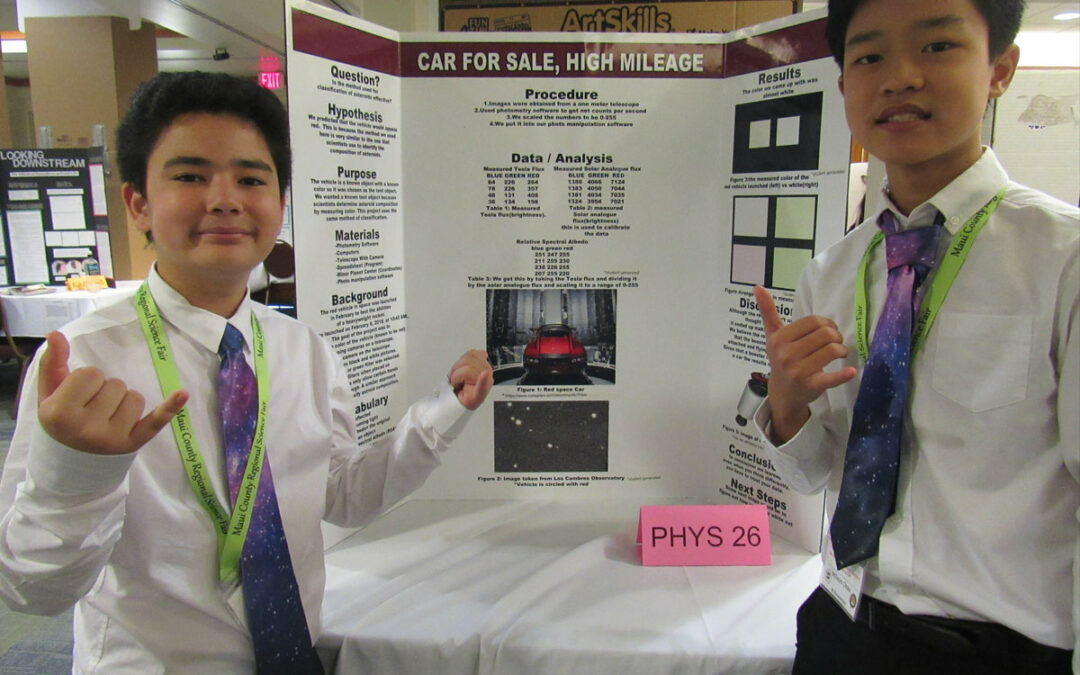
Mar 20, 2019 | Environment, Sustainability
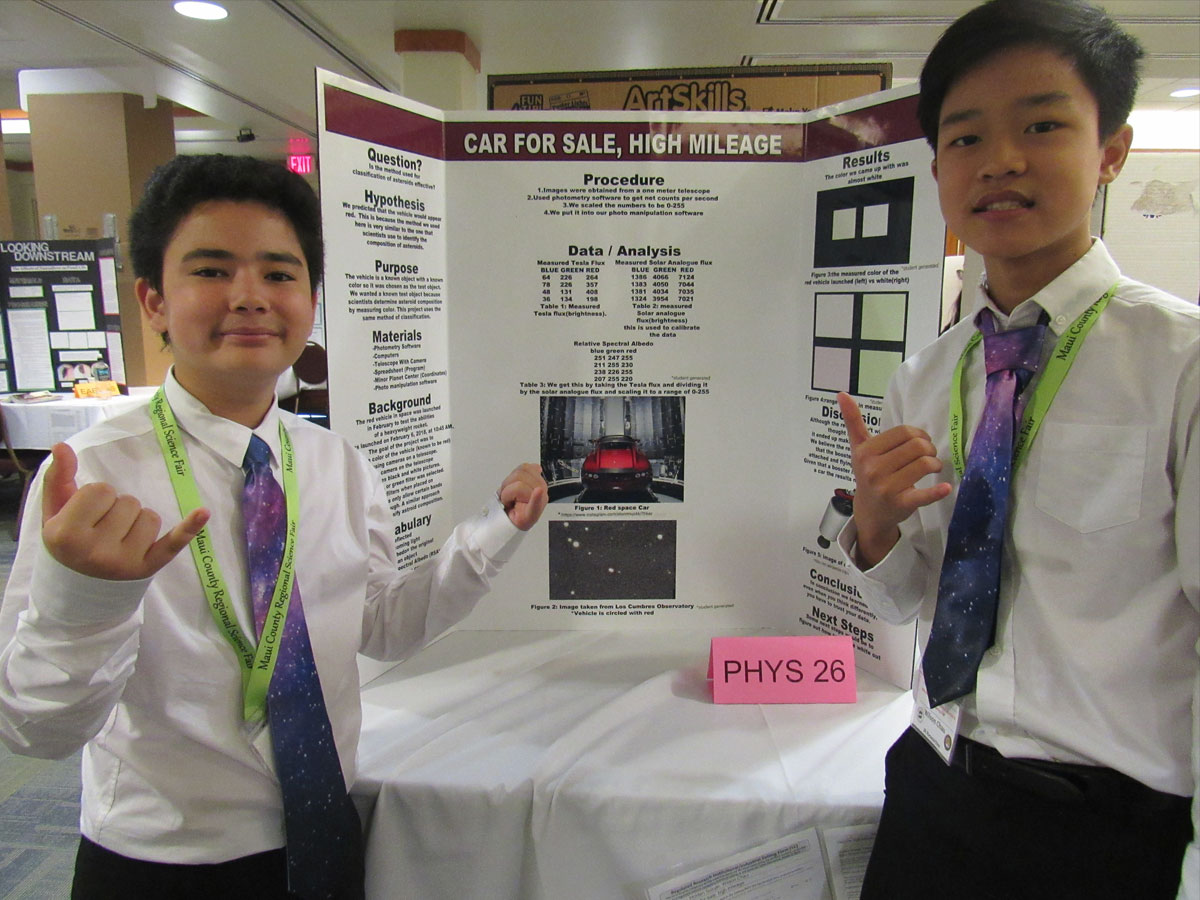
First-place Maui County Regional Science & Engineering Fair Junior Division winners Holden Suzuki and Wilson Chau, Maui Waena Intermediate School STEMworks™ 6th graders, used the scientific method of photometric observations in their award-winning project, “Used Car, High Mileage”. “The purpose of our project was to view the compositions of asteroids through using color, the method commonly used by scientists,” Suzuki and Chau said. “We did this by gathering images of Elon Musk’s cherry-red Tesla convertible that he launched as the payload for the first flight of his new rocket, Falcon Heavy, in February 2018. The upper stage of the Falcon rocket pushed the Tesla car into an elliptical, heliocentric orbit between Earth and Mars.”
Suzuki and Chau explained, “The vehicle, having a known color, was chosen as the test object. We predicted that the vehicle would appear red because we used a method similar to the one scientists use to identify the composition of asteroids. We put data from three different filters into Astrometrica photometry software and got a color that was similar to white. Although the result wasn’t what we thought it would be, it ended up making us think more. We believe the reason it’s white is that the white booster rocket is still attached and flying with the vehicle. Given that the booster is much larger than the car, the results make sense. In conclusion, we learned that, even when we think differently at first, we have to trust our data. Some next steps would be to figure out how to get the white out of our data.”
Holden and Wilson’s mentor, Dr. J.D. Armstrong, Educational Outreach Specialist, University of Hawaii’s Institute for Astronomy, said, “Some people thought there wasn’t really a car up there at all, so we decided to see if we could get some observations to support the claim that it was a car. The first thing that came to mind was to measure the color. This was fun and interesting science. Besides, it might be the real motivation for many of the greatest discoveries in science!”
We are extremely excited to represent Maui District in the Hawaii State Science & Engineering Fair on Oahu, set for April 8-10.
Holden Suzuki and Wilson Chau, Maui Waena 6th graders
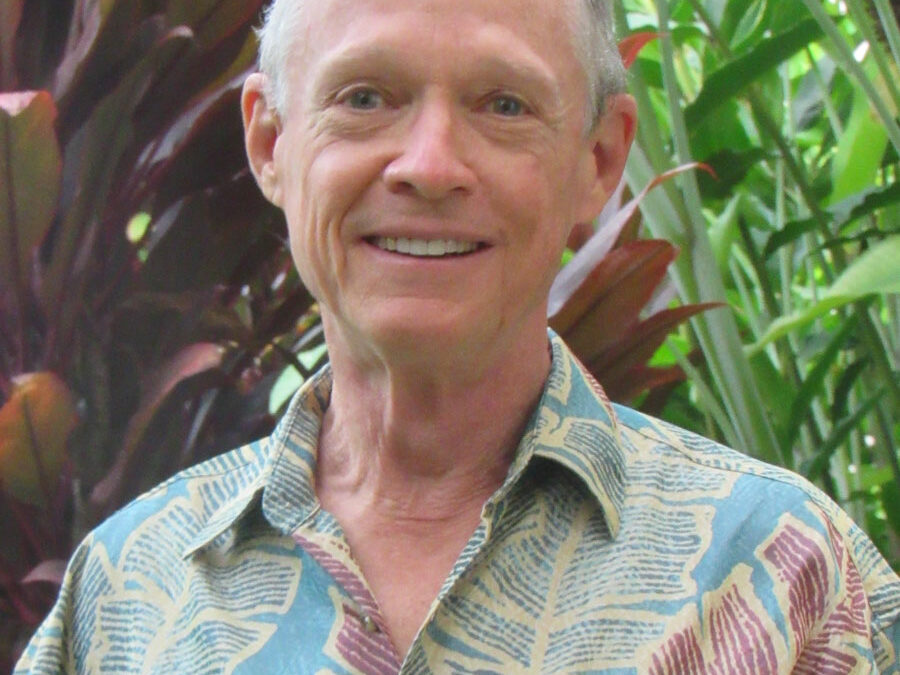
Mar 13, 2019 | Education, Environment, Innovation
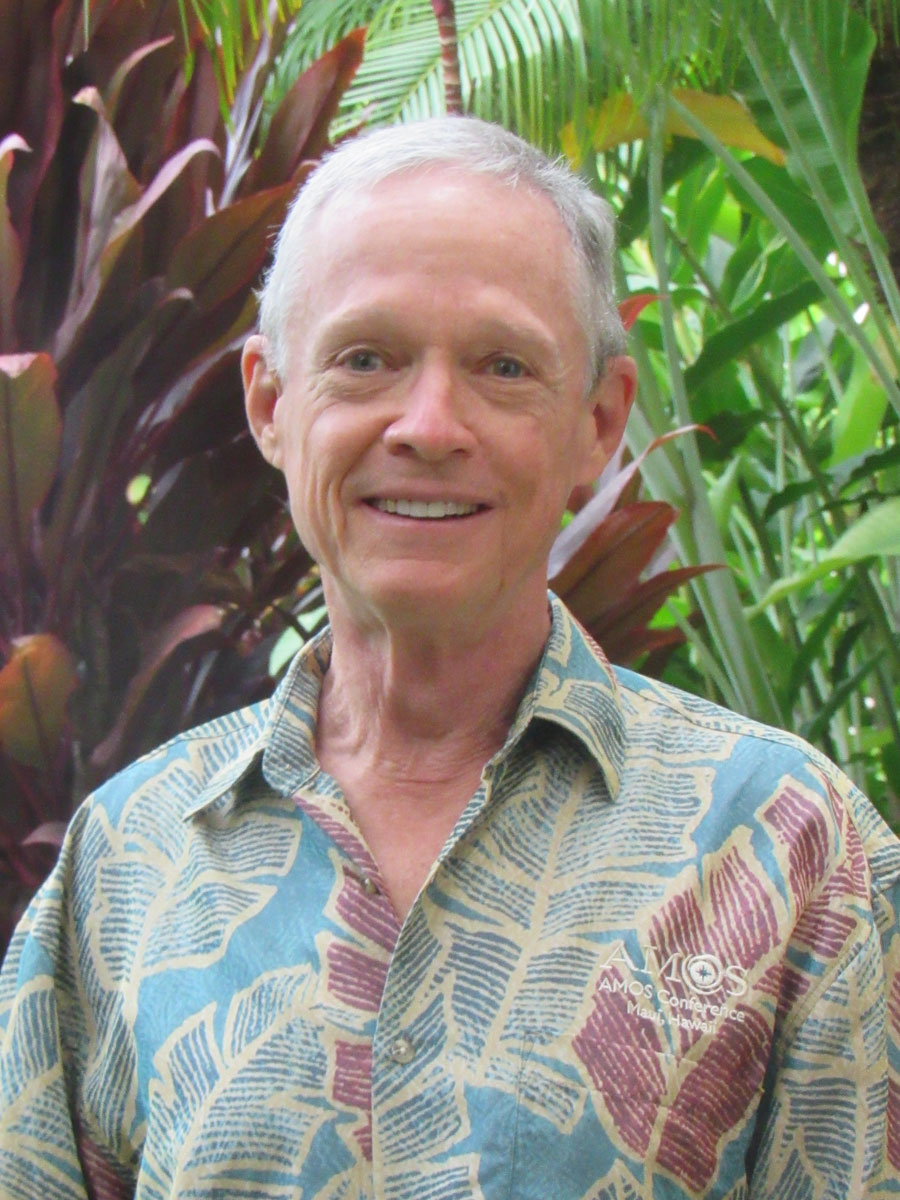
Maui resident Dr. T.S. Kelso has been tracking satellites for over 35 years. Kelso serves as a Senior Research Astrodynamicist and Space Data Center Operations Manager for the Center for Space Standards & Innovation at Analytical Graphics, Inc. (AGI). Throughout his career he has supported the space surveillance community by providing educational materials and data to satellite users around the world.
“My main job is running the Space Data Center, where we screen 748 satellites for 30 satellite operators from many nations,” Kelso explained. “We are screening these satellites to identify close approaches with other satellites and all the debris up there. Right now, there are 2,000 operational satellites in Earth orbit, and we track over 17,000 objects larger than 10cm. The real challenge is filtering through the hundreds of close approaches we see each day, so that the operators can focus on how to move in time to avoid a collision.”
AGI is a big supporter of education and has been a key sponsor for the annual Advanced Maui Optical and Space Surveillance Technologies Conference (AMOS) Conference, a program of Maui Economic Development Board (MEDB). “Not only does AGI sponsor AMOS, but we have hosted a star party each year to introduce attendees to the wonders of the Maui sky,” said Kelso. “In addition, we have supported MEDB’s STEM (science, technology, engineering, mathematics) programs with free educational copies of our software.”
Kelso also operates the CelesTrak website, the world’s first private source for orbital element sets and related software and educational materials. The site is visited by more than 350,000 users each day and supports everyone from professionals operating satellites in orbit, to faculty, students, and other researchers investigating the space environment− to individuals who just want to go out to see the International Space Station pass over.
Kelso concluded, “All the safety and security considerations of air and sea travel now pertain to space travel at a vastly enhanced level because the costs and risks are even higher. The event of spacecraft colliding is serious to our global economy and security.”
We can move satellites so they don’t get hit, and we do that every day. AGI designs software to predict close approaches of satellites. That’s my job; that’s what I do!
Dr. T.S. Kelso, Senior Research Astrodynamicist and Space Data Center Operations Manager, Center for Space Standards & Innovation, AGI

Mar 6, 2019 | Environment, Events, Small Business
Hawaii has experienced enormous growth in distributed energy resources, primarily photovoltaic systems. This year’s conference will take an in-depth look at the innovative policies and technologies that continue to allow rapid growth in PV, and will compare Hawaii solutions with those in Colorado, California and other states. We will also ask what the right blend of fossil fuel and renewable energy sources is for the portion of our economy not covered by the Renewable Portfolio Standard. Come join the discussion at one of the nation’s leading energy conferences.
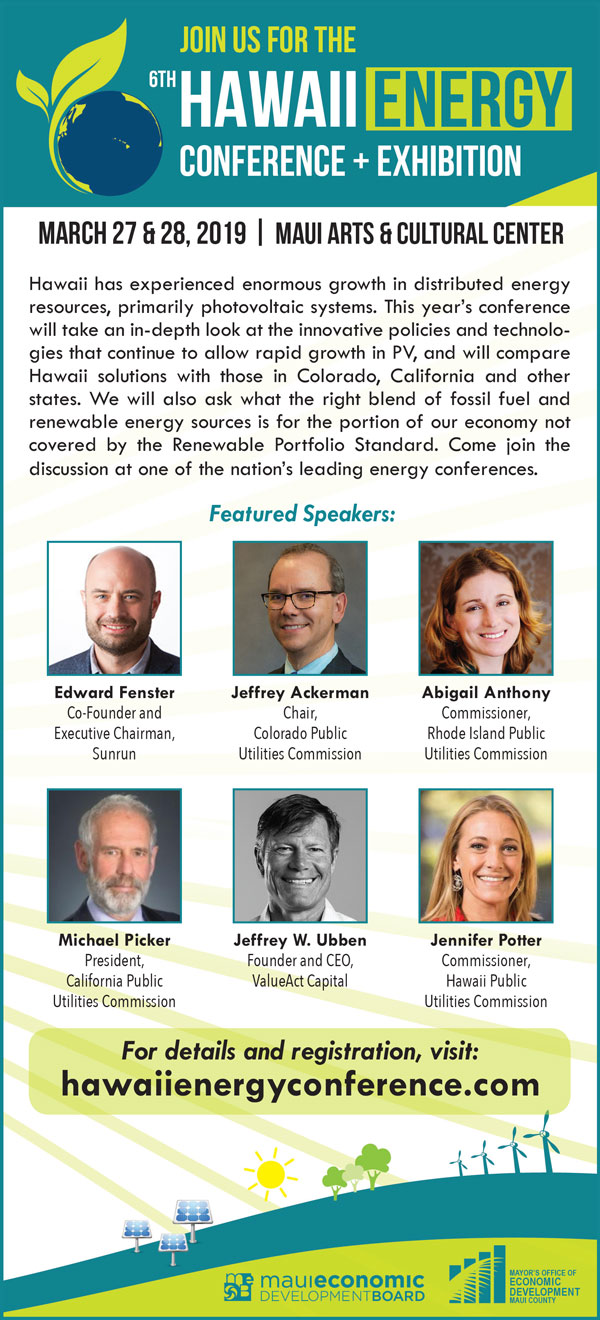
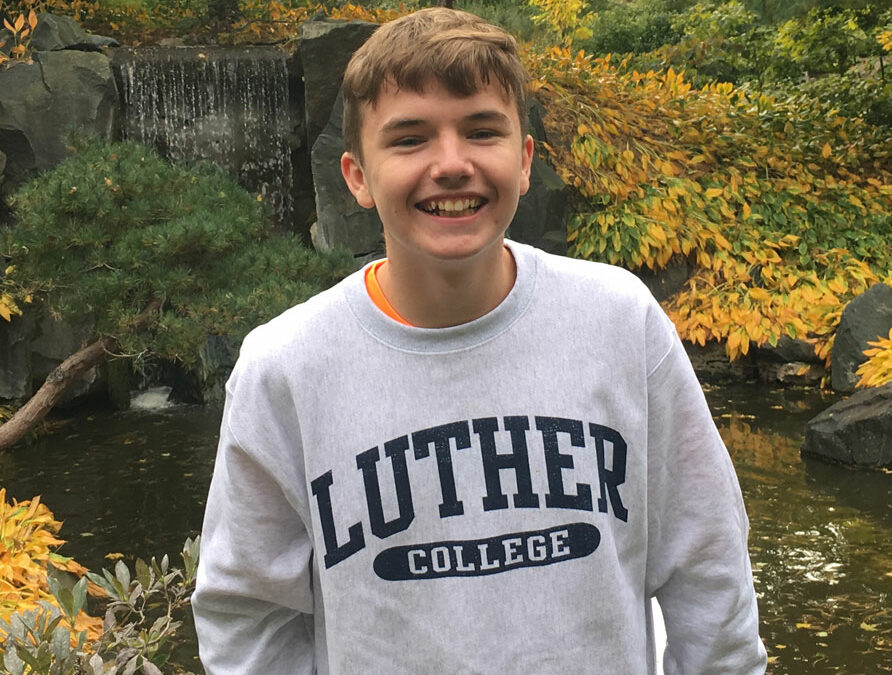
Nov 21, 2018 | Community, Environment
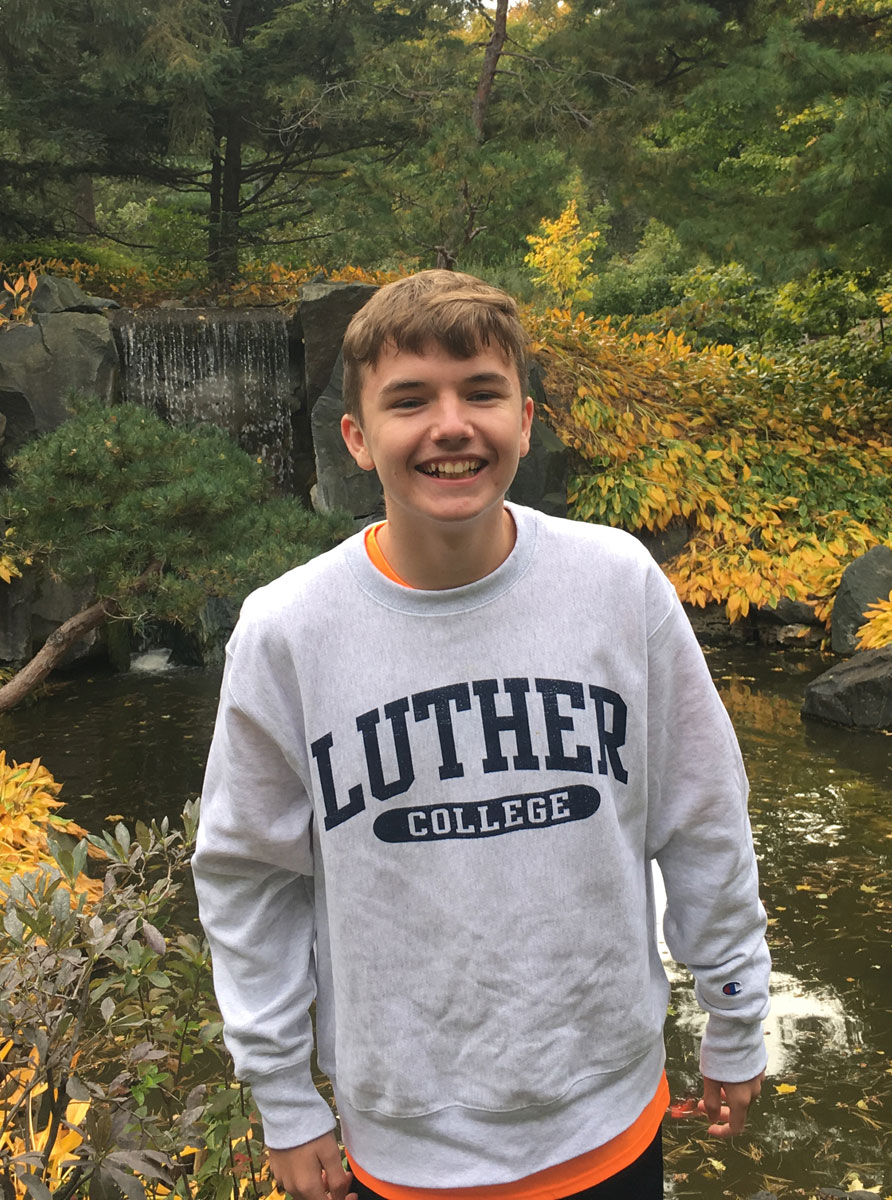
In this season of thanksgiving, we can gain inspiration from Matteo Musso, a frequent visitor to Maui, is a 14-year-old author, speaker, yet mostly non-verbal autistic young man. After almost 12 years of silence, Musso found his voice by spelling his thoughts, one letter at a time, on a stenciled letter board called a flatboard. His inspired thoughts, wisdom, and tips on autism are now being shared with the world.
Musso has given presentations at the Maui Autism Center, the Wisdom Center for Autism, on Maui Source TV, and wrote an article in Maui Vision Magazine. His books, “I am Yours” and “Love Land” are available on Amazon. He also has a YouTube series, Mondays with Matteo.
“It’s been a long road that led us to the miracle of finally getting to know Matteo,” said his mom, Annette. “He was diagnosed formally at age three, and after many years of difficult therapies was introduced to the Son-Rise program. Through the Rapid Prompting Method, he learned to communicate using the flatboard, which acts as a conduit between his deep thoughts and the expression of them in an understandable way.”
Annette continued, “Amazingly, Matteo was able to tell us what he thinks his life purpose is. He said he agreed with God to be a voice for the silent ones on this Earth and to encourage all of society to stop judging each other and move toward total acceptance of our differences, to see them as gifts which can bond us together instead of separating us. We can lift each other up even though our minds work differently, and we experience life in varied ways. Our differences provide depths of perspective, giving us many gifts to share.”
In a message of thanksgiving, Matteo said, “If we desire beautiful and fruitful crops in our lives, we don’t get to be bystanders. Seeing the good is an active choice on our part. Search for the things that are beautiful in your day. Notice the beauty that’s around you no matter what’s going on. We can plan our healthy harvest, then harvest the happiness that we have nurtured—even through the storms.”
Through a recent miraculous discovery, his trapped intelligence released, Matteo now shares amazing insights of love, God, finding happiness, and the gifts of autism.
Annette Musso, Matteo’s Mom
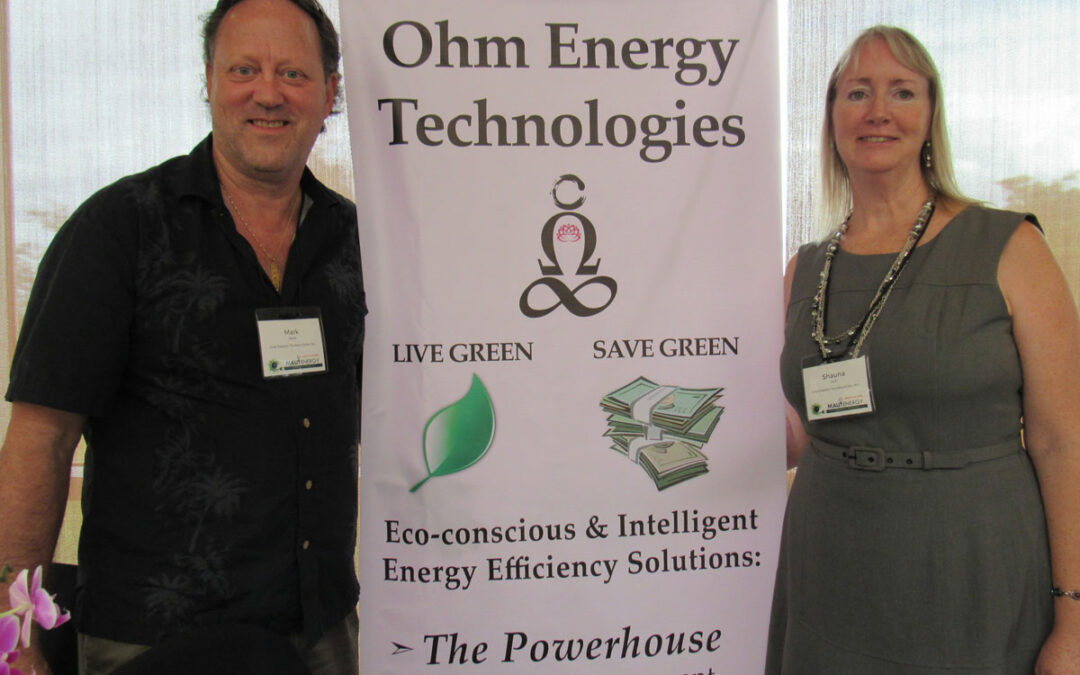
May 23, 2018 | Environment, Sustainability
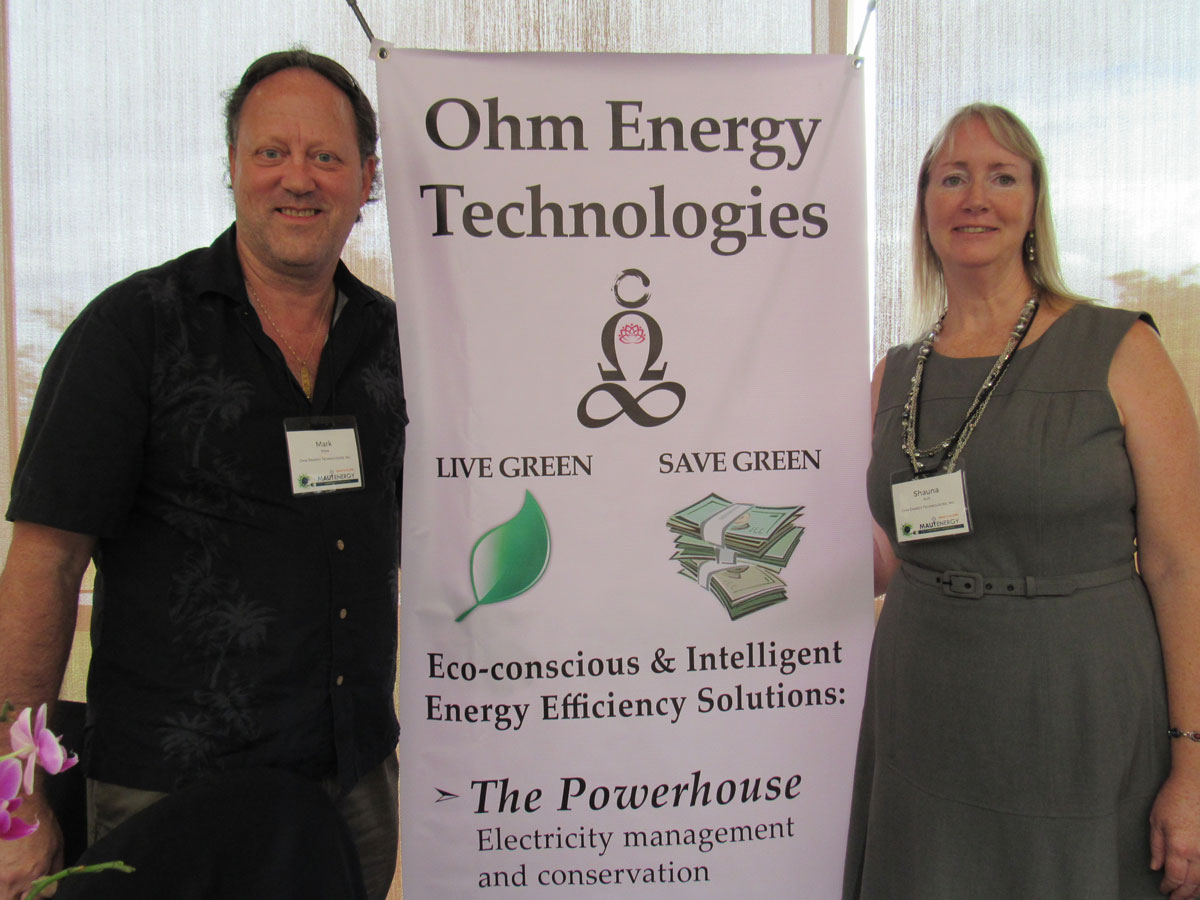
Mark Ware and Shauna Ault of Ohm Energy Technologies, Inc., exhibitors at the 2018 Maui Energy Conference, provide the technical acumen and business management for their family-run company. “Maui called us several years ago, prompting us to create a business that would serve the Hawaii community,” said Shauna Ault. “In 2016, Ohm Energy Technologies relocated from Idaho to Hawaii, to further serve a market experiencing high electricity costs. We are making significant impacts in reducing the consumption of electricity, thus reducing the amount of petroleum fuels burned, as well as saving our customers a significant amount of money on their electricity costs. Hawaii has an aggressive energy efficiency promotion policy, with targets of 100 percent renewable sources of generation by the year 2045. Currently, however, Hawaii still generates approximately 60 percent of its electricity by burning petroleum-based fuels.”
Ohm was established in 2014 to facilitate sales and installation of energy efficiency equipment in a variety of markets. Their primary product, The Powerhouse, was developed by an electrician as a prototype in 2002. It was so successful that it was quickly scaled up to small commercial application. Demand from larger facilities followed. Currently designed for commercial and industrial installations, The Powerhouse has reduced electricity bills by 10, 20, and even 30+ percent, depending on existing efficiency and types of equipment.
“In 2017, Ohm collaborated with manufacturers in California and Maine to develop the next generation of Powerhouse technology: a variable-capacitance system that dynamically adjusts to electricity demand, and a digital internet-accessible monitoring system for rapid access to data and control,” Ault explained. “These systems are now installed in an expanded market on Oahu and Maui, maximizing kilowatt reductions while continuing to provide all other benefits of The Powerhouse. Additional technologies we can implement include state-of-the-art LED lighting for commercial and municipal settings, solar LED street lamps, variable-frequency drives, and harmonic distortion control equipment. With this portfolio of energy efficiency solutions, Ohm Energy Technologies is well positioned to solve many of our energy concerns today, and into the future.”
Hawaii has been our strongest market to date; however, The Powerhouse has been installed in over 700 facilities in the U.S. mainland and Canada.
Shauna Ault, Ohm Energy Technologies, Inc.

Mar 14, 2018 | Environment, Events, Small Business
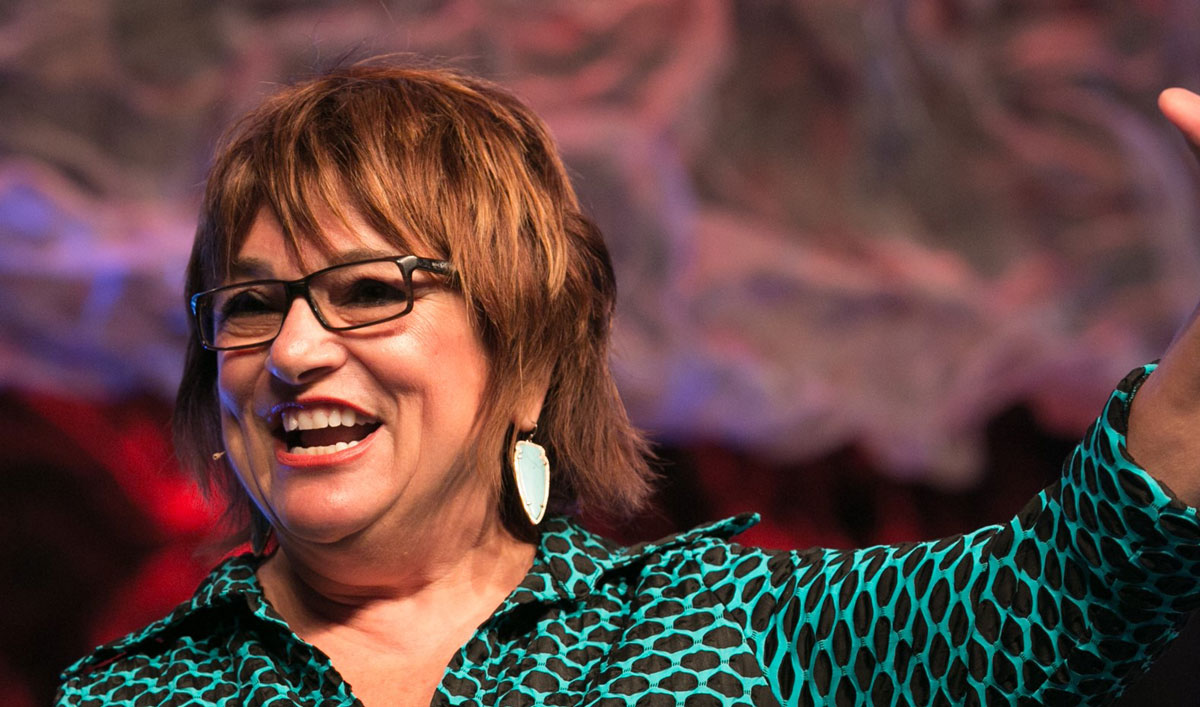
Keynote speaker Karen McCullough
Maui Economic Development Board (MEDB), in collaboration with Maui County’s Office of Economic Development, will present their 2nd Annual Hawaii Small Business Conference at the Maui Arts & Cultural Center in Kahului on May 2-3, 2018. The event, coinciding with National Small Business Week, recognizes the contributions of America’s entrepreneurs and small business owners. This year’s theme, Plan, Build, Grow: Mapping A Pathway to Success, provides an opportunity to take any business to the next level, whether a one-person enterprise or a large-size company. Attendees will learn key strategies from national and local business leaders, in sessions, workshops and exhibits, on topics such as Business Growth, Customer Service, Entrepreneurial Psychology; Innovation, Tax Strategies, Social Media Management, and more.
According to Teena Rasmussen, Director of County of Maui Office of Economic Development, “Business owners are so busy working they rarely take time to reflect about their daily business or fly to a mainland conference. The Hawaii Small Business Conference offers owners a very affordable way to receive cutting edge information by nationally known speakers right here on Maui.”
Among this year’s presenters will be keynote speaker Karen McCullough, a well-known customer and employee engagement expert who inspires change in the workplace. McCullough helps organizations and leaders cut through generational stereotypes by leveraging their team’s strengths, enriching the work environment, and driving better results. For the last 15 years she has been developing creative solutions and implementing innovative methods inspiring people to connect, collaborate, and welcome change. Each of her presentations brings a realistic perspective on the future of a business.
During the Hawaii Small Business Conference, McCullough will speak on the topic “Going Beyond Your Brand—Delivering WOW Service”. She will focus on how businesses are redefining their mission and vision as their brands expand into customer and employee engagement. McCullough believes, “Your brand is the core of your company, the heart of your business, the soul of your culture, and the foundation for a great customer experience. The way you get beyond the brand is through employee and customer interaction.”
For a schedule of speakers, workshops, and online registration visit www.HawaiiSmall.Biz. For sponsorship and exhibition opportunities, email smallbiz@medb.org or call (808) 875-2300
MEDB High Tech Maui
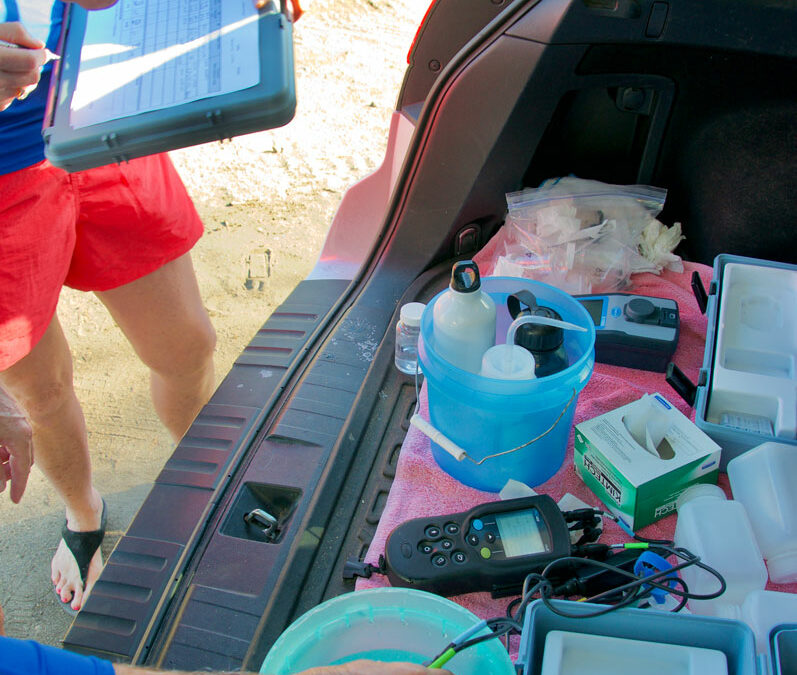
Feb 21, 2018 | Environment, Sustainability

A volunteer-based water quality testing program known as Hui O Ka Wai Ola, Association of the Living Waters, recently began expanding its testing from West Maui to South Maui shoreline locations. The project informs residents about how clean the water is at their favorite beaches. It was made possible through a partnership with the Hawaii Department of Health (DOH), the Maui Nui Marine Resource Council (MNMRC), The Nature Conservancy, West Maui Ridge to Reef Initiative, and the University of Hawaii Maui College.
“Hui O Ka Wai Ola is the first community-based water quality monitoring program in the state,” said Dr. Kim Falinski, Marine Science Advisor at The Nature Conservancy. “It periodically measures turbidity, a measure of water clarity, and nutrients in near-shore ocean water. Robin Newbold, co-founder and chair of MNMRC noted, “Our goal is to support the DOH and Maui County efforts to improve coastal water quality so that coral reefs and native fish populations thrive, and our residents and visitors are safe. We want to help identify problem areas, so remedial action may be taken to address the pollution as quickly as possible.”
Sofia de la Sota, South Maui Regional Coordinator and team leader, said, “A citizen science program like ours would not be possible without an amazing team of volunteers. More than 20 volunteers have completed intensive training and are ready to start water quality testing.” The team will test several factors: turbidity, salinity, dissolved oxygen, pH, temperature, and others. The test for nutrients, such as nitrogen and phosphorous compounds, can indicate pollution from wastewater run-off from agriculture, landscaping, and golf courses. “Too many nutrients in the water can cause an increase in invasive algae, which is damaging to coral reefs,” de la Sota said. “The resulting data will be used to supplement DOH water quality monitoring on Maui and can be viewed at the Hui o Ka Wai Ola website.” To learn more about Hui O Ka Wai Ola, to donate or to volunteer, visit www.huiokawaiola.com.
During every collection period, the volunteers will also collect samples that will be frozen and shipped to the School of Ocean and Earth Science and Technology Laboratory on Oahu for nutrient analysis.
Sofia de la Sota, South Maui Regional Coordinator
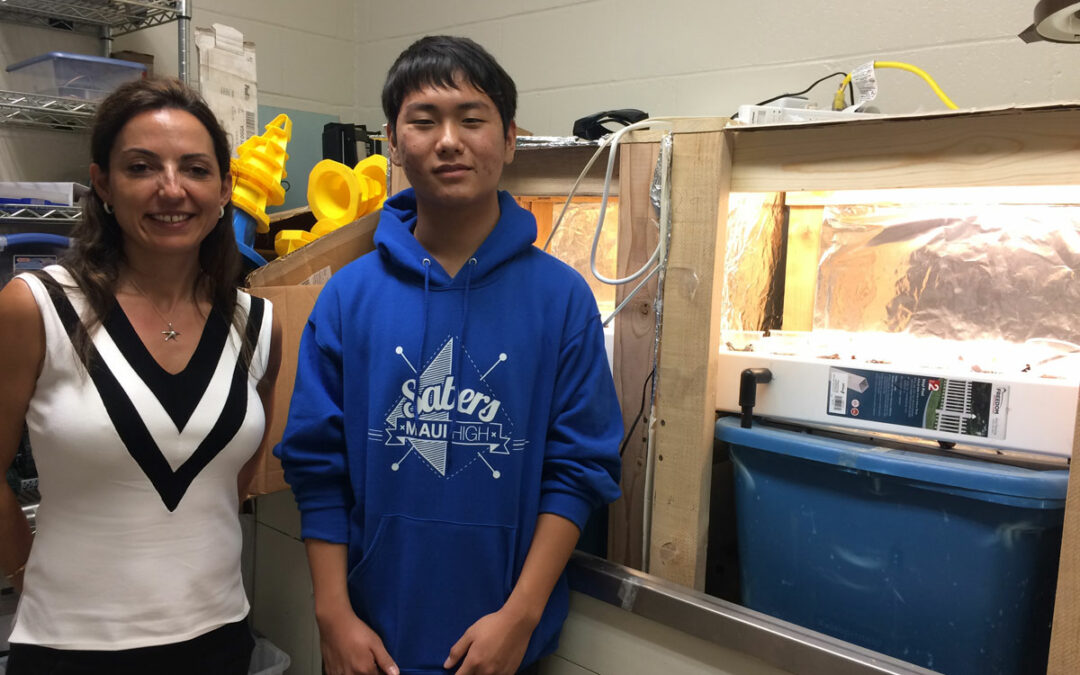
Jan 31, 2018 | Environment, Innovation, Stemworks
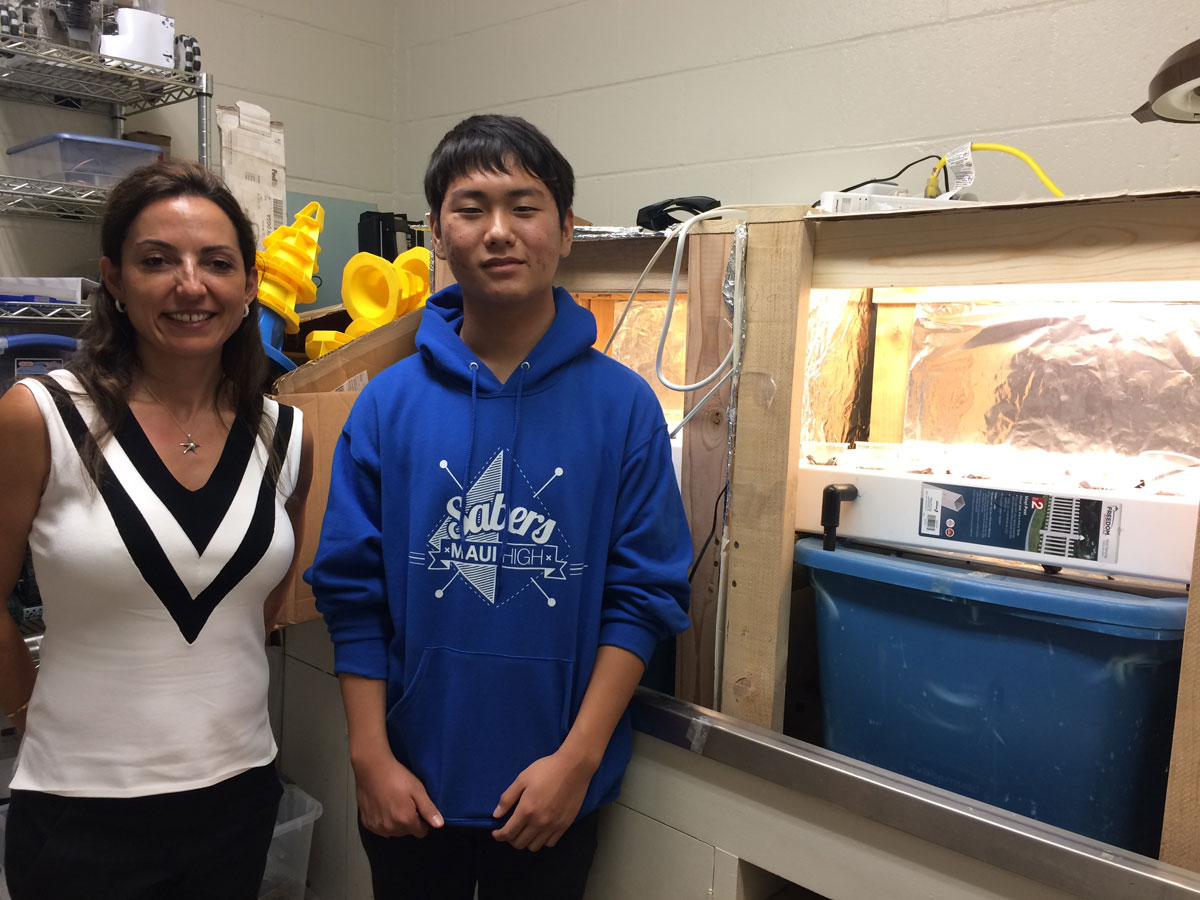
The University of Hawaii (UH) Educational Outreach Team and Maui Economic Development Board have long shared common goals for STEM (science, technology, engineering, and mathematics) education. Recently, UH-Manoa Physics Department hosted a group of three Maui High School students, Mary Chin, OneJae Lee, and Zain Jabber, at a Maui workshop to present their summer research findings on the effect of cosmic rays on Mars colonization. With the help of their project mentors, Dr. Veronica Bindi, UH-Manoa associate physics professor, Dr. J. D. Armstrong, UH Institute for Astronomy (IfA), and their Maui High science teacher, Keith Imada, the students investigated possible correlations between galactic cosmic rays and solar activity to determine the amount of radiation astronauts would encounter enroute to Mars and living there.
“Space radiation represents the major obstacle to manned missions to Mars,” said Bindi, who gave a presentation to Maui High students entitled, ‘When is the best time to go to Mars?’ “Radiation damages the DNA of the astronauts in irreversible ways. We are working with NASA to assess the amount of radiation astronauts would be exposed to, how to mitigate it using special shields, and the viability of food production on Mars.”
Mary Chin’s project was focused on the study of cosmic rays, building a low-cost muon detector and developing the software to operate it. Another student, OneJae Lee, designed and built his own hydroponic system to test the effects of space radiation on food plants. “Although it is difficult to replicate galactic cosmic rays in a laboratory, it is possible to test other high-energy radiation,” Lee explained. “I found many challenges to having the plants survive even with lower-energy ultraviolet-C rays.”
Zain Jabbar researched coronal holes caused by interacting magnetic fields on the sun and whether they are related to sunspot activity. “I looked for a connection to the solar cycle, comparing conditions when the sun is very active and when it is much less active. Greater solar activity can result in electrical grid blackouts around the world.”
I mimicked conditions on Mars using ultraviolet-C rays to study whether the light present on Mars could be used for plant growth without special filters.
OneJae Lee, Maui High School
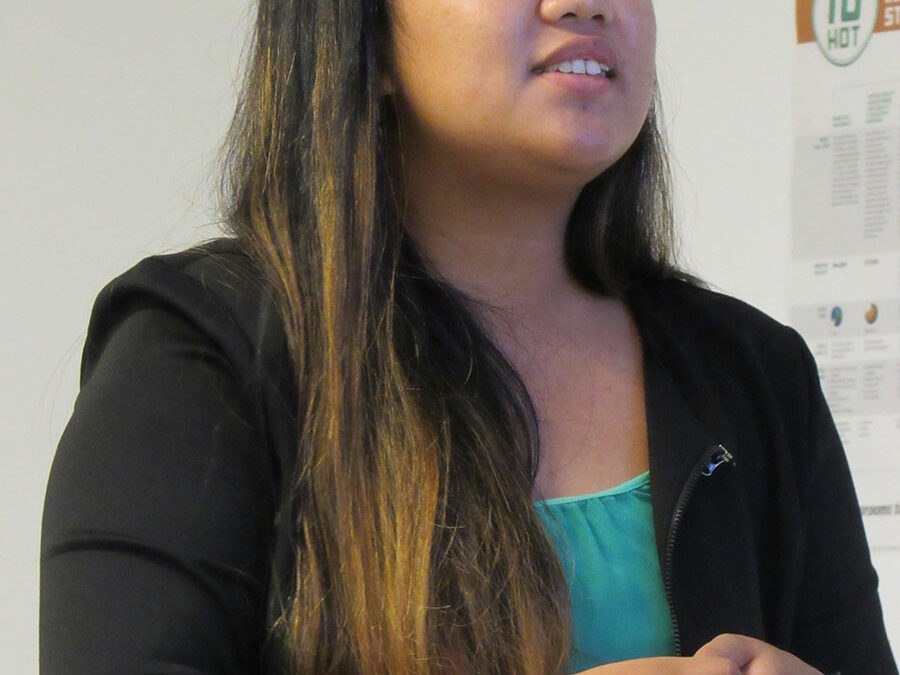
Nov 22, 2017 | Environment
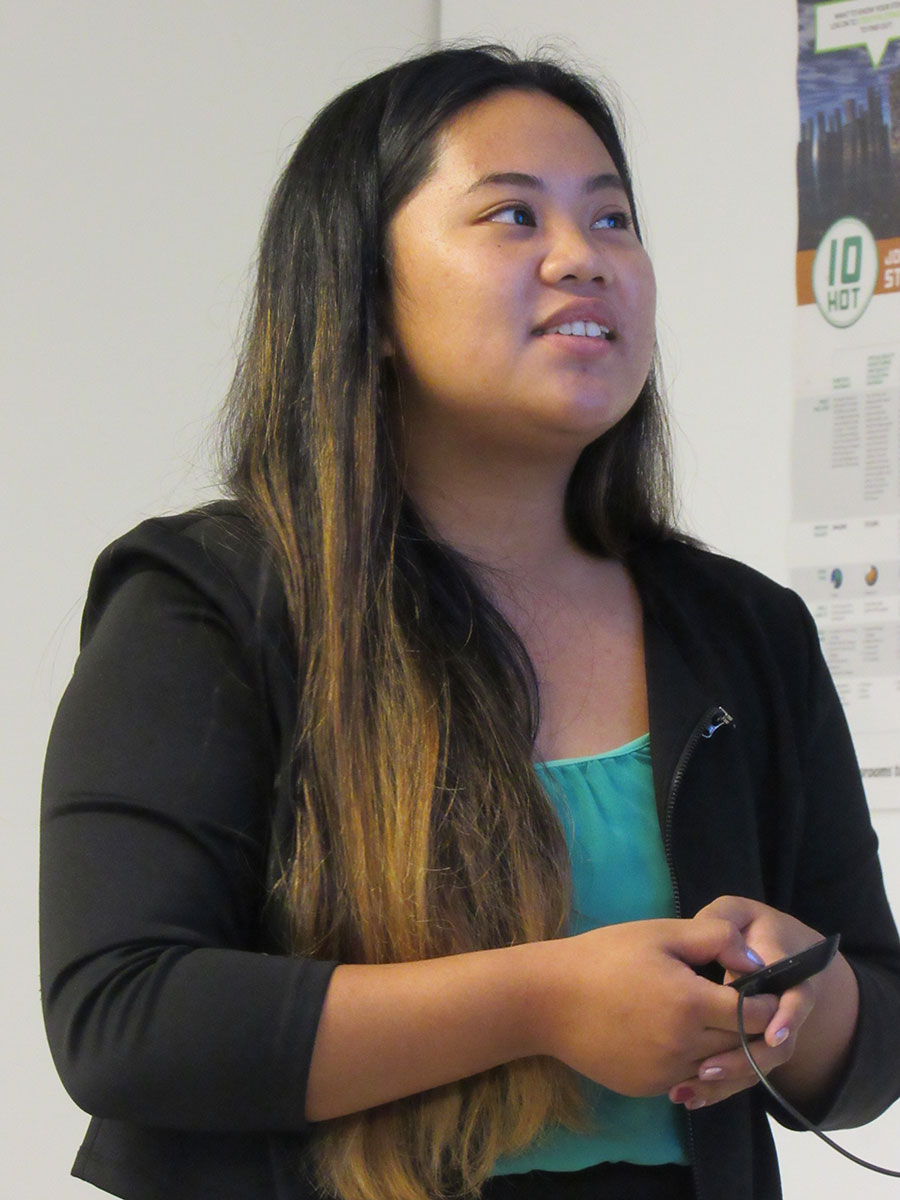
Maui Economic Development Board’s (MEDB) Women in Technology (WIT) Project is an initiative whose mission is to promote STEM (science, technology, engineering, mathematics) education throughout the state with hands-on and project-based service learning. WIT’s STEMworks™ Summer Internship Program brought Maui High School student Renezel Lagran to the Maui Nui Seabird Recovery Project (MNSRP) for a mutually beneficial six-week partnership. “Lagran learned natural history and conservation through extensive field experience,” said Jay Penniman, MNSRP Project Manager. “In return, her immense talent and technical ability gave us valuable video production and file organization.”
Penniman continued, “This was the perfect opportunity for Lagran to learn directly from wildlife experts, not only to make her more aware about different STEM careers but also to teach her to become a steward of our islands. STEMworks™ gives us hope for our planetary future when we see women like her take their engineering and technical education forward to embrace our seabird community. Our efforts to restore our struggling native resources will only benefit from the engagement of stellar youth such as Lagran and opportunities provided by programs like WIT’s STEMworks™.”
Lagran noted, “Before MNSRP, the significance of seabirds did not cross my mind. Now, after six incredible weeks of internship with the company, I am aware of the urgency for their survival. Not only do seabirds possess cultural significance, they also provide key ingredients needed to preserve the world’s ecosystem. It’s now my personal mission to inform the community about these facts and what we can do to support their existence.
Besides bringing new and profound information, Lagran’s experience with MNSRP was also fun. “Between the vital teachings were unforgettable memories that I will forever cherish,” she said. “I was able to use field instruments, hike the steep slopes of Haleakala and most importantly, gain life-long connections. My mentors and I have already discussed a future partnership beyond the internship program. To say that I am excited is an understatement.”
My mentors taught me how to use conservation equipment such as the song meter, infrared cameras, and night vision goggles which helped me create public service announcement videos about downed native seabirds. Thank you MEDB and MNSRP for this experience!
Renezel Lagran, STEMworks™ Summer Intern


















